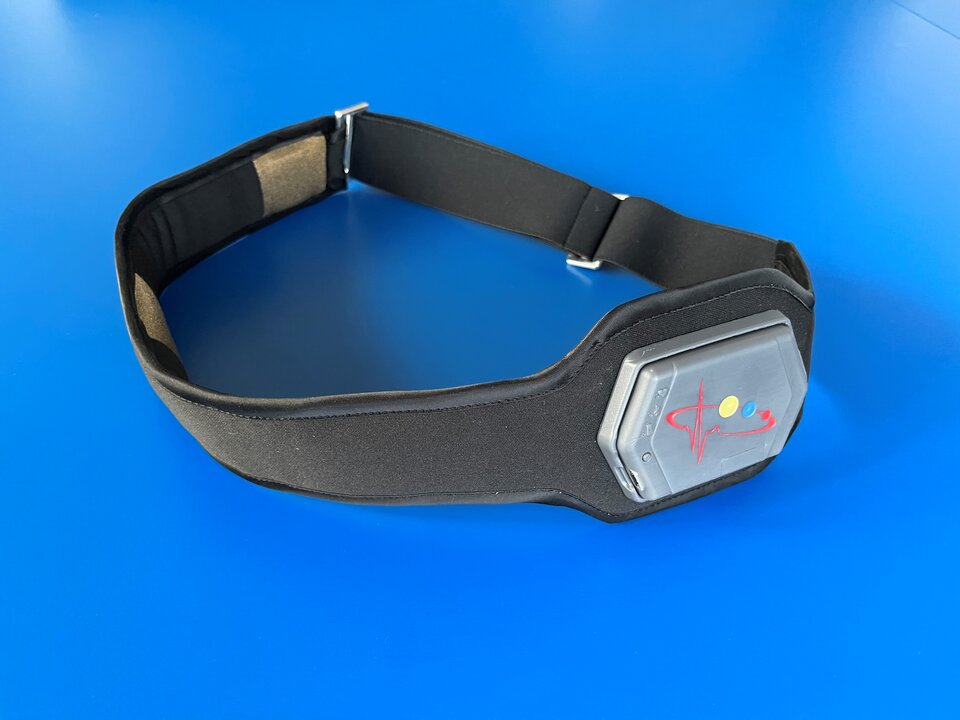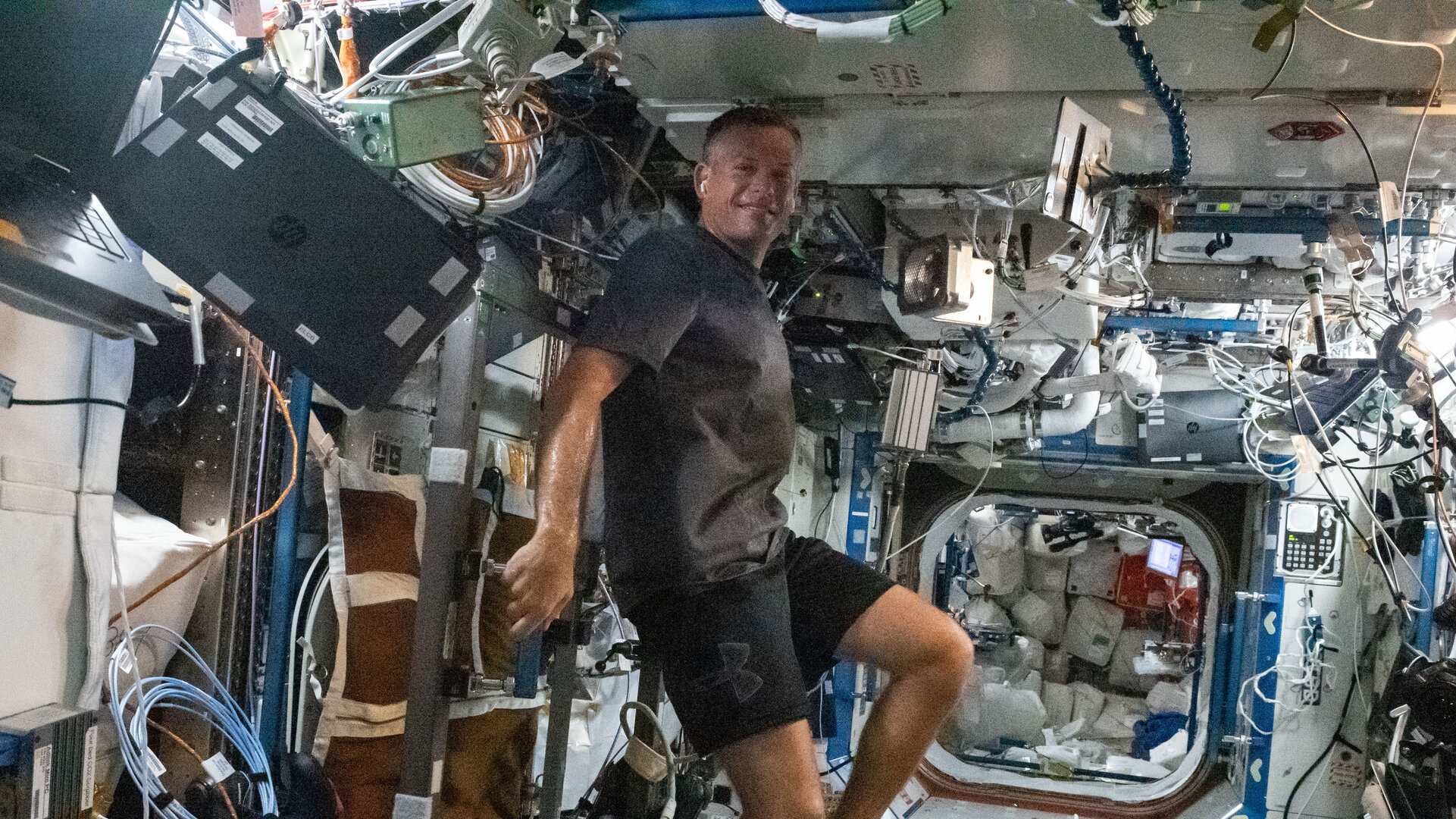Fitness tracker beyond Earth
One of the experiments during ESA astronaut Andreas Mogensen’s mission will track his health and body vital signs during his daily exercise in space.
Understanding how the human body copes with microgravity is the focus of many experiments on the International Space Station. While it takes about two weeks for astronauts to get used to being in space, keeping track of how the body is doing, especially during exercise, can help researchers understand how astronauts can best be assisted in orbit.
On his Huginn mission, ESA astronaut Andreas Mogensen will exercise with the SpaceWear monitor strapped to his chest to measure vital health parameters, such as skin temperature and heart rate.
Small size, big impact

SpaceWear is a device about the size of a watch that Andreas straps around his torso while exercising. It monitors a range of health indicators like the heart rate and its variability, respiratory rate, how the body is orientated and moves and the skin temperature. All of this at 1000 times a second and with a 10-hour battery life.
“There are already health monitors in use on the International Space Station, but what sets the SpaceWear monitor apart from these is the frequency and quality of the data that it measures. Along with a long battery life, we are looking forward to seeing how the SpaceWear monitor can help astronauts in their daily life on the Space Station,” says Thomas Andersen, CEO of Danish Aerospace Company that developed the device.
From astronaut to firefighter
The SpaceWear monitor is designed for extreme environments. Andreas’s testing on the Space Station could open up applications for dangerous situations. For example, firefighters deal with high heat, heavy equipment, and physically demanding work, SpaceWear could monitor and provide medical personnel details to help prevent any serious health problems and take measures to avoid them.
The health tracker can also all who practice extreme sports, such as drivers experiencing high g-forces during motorsports and climbers ascending high mountains in a thin atmosphere.
Read more on the science of Andreas’s mission on his Huginn page and follow along in his journey on social media platforms.















 Germany
Germany
 Austria
Austria
 Belgium
Belgium
 Denmark
Denmark
 Spain
Spain
 Estonia
Estonia
 Finland
Finland
 France
France
 Greece
Greece
 Hungary
Hungary
 Ireland
Ireland
 Italy
Italy
 Luxembourg
Luxembourg
 Norway
Norway
 The Netherlands
The Netherlands
 Poland
Poland
 Portugal
Portugal
 Czechia
Czechia
 Romania
Romania
 United Kingdom
United Kingdom
 Slovenia
Slovenia
 Sweden
Sweden
 Switzerland
Switzerland

























